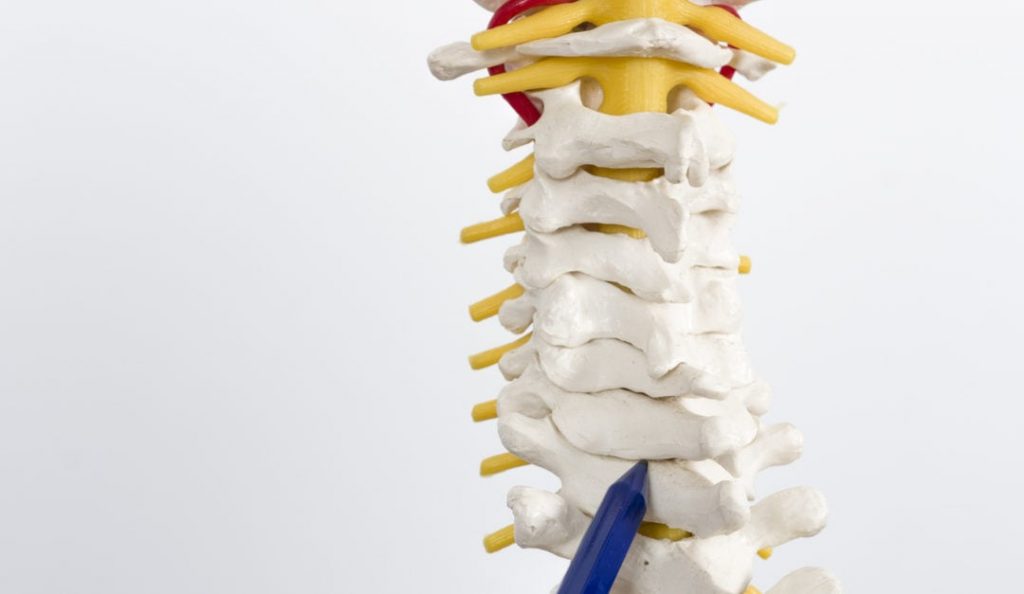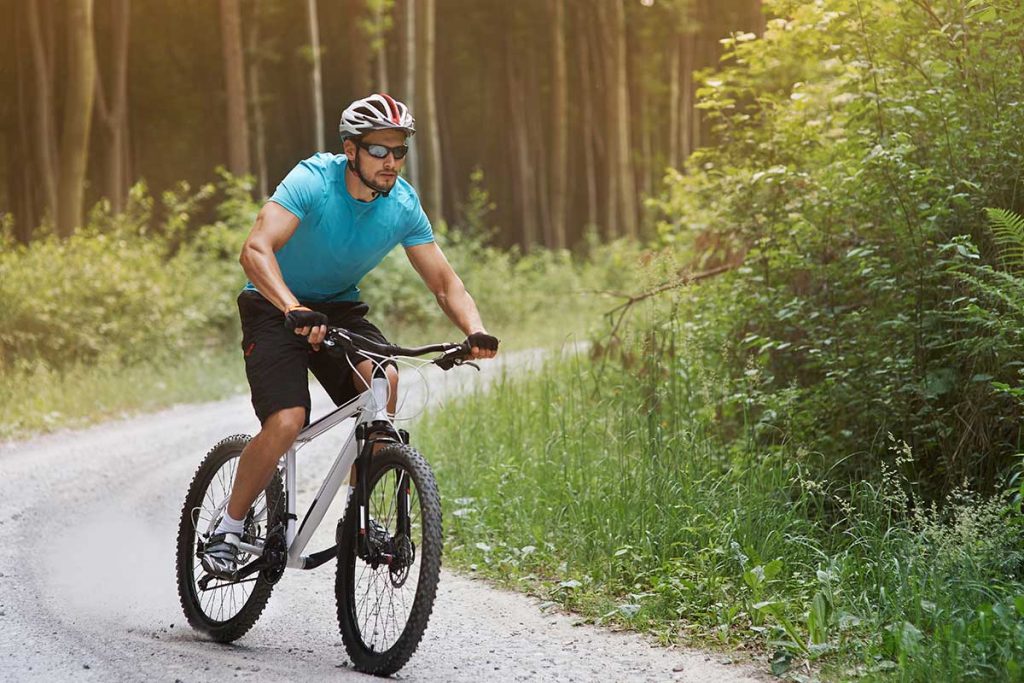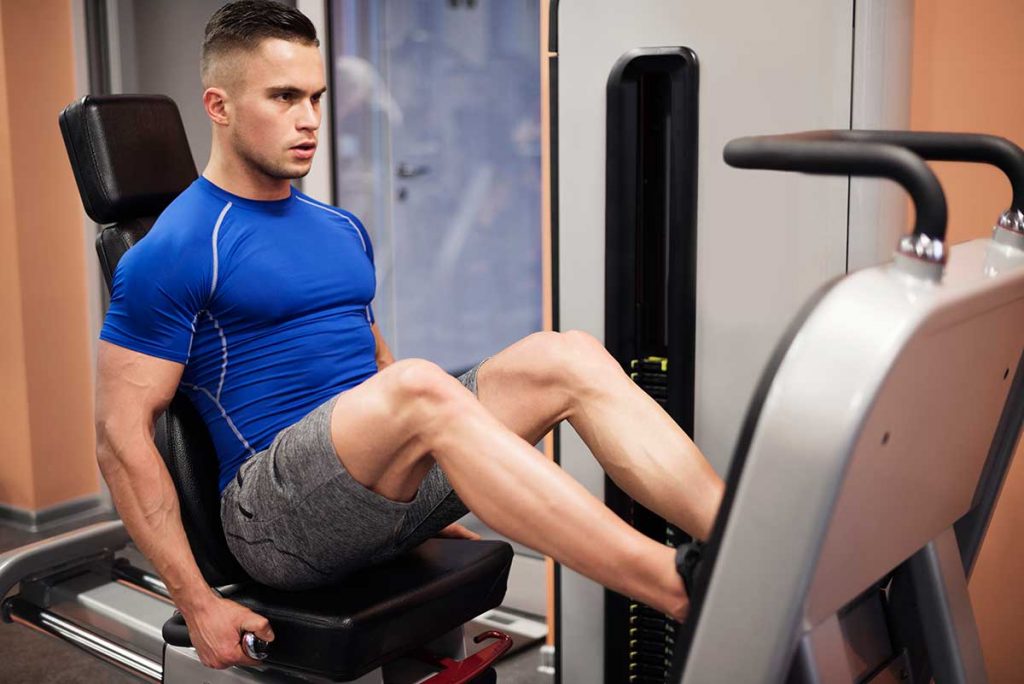Table of Contents
- What is a Herniated Disc?
- How to Prevent Herniated Disc Issues
- Easy Tips for Avoiding a Herniated Disc
- Herniated Disc: Exercises to Avoid
- Take Spinal Care Seriously at Any Age
The spine is made up of a series of vertebrae (bones) cushioned by discs. When a disc is injured or deteriorating due to disease or aging, it can lead to a herniated disc. There are ways to avoid developing this condition with exercise, taking precautions and making lifestyle changes.
What is a Herniated Disc?
Briefly, the cushioning material between the spine’s vertebrae acts like shock absorbers. The disc has an outer layer called an annulus which is made of tough tissue. The annulus protects a softer interior tissue called the nucleus. A rupture or tear in the annulus allows the nucleus to be pushed out and into the spinal canal.
A herniated disc is also commonly called a bulging disc or slipped disc. The spinal canal runs through each vertebrae down the back and is just large enough to contain the spinal nerve (spinal cord). The nucleus entering the spinal canal through the annulus rupture or tear is invading a crowded space, and the disc is likely displaced at the same time, meaning pressure is placed on the spinal nerve. The result is some degree of pain.
Herniated Disk
A herniated disc is a condition that affects the back. It can cause pain, numbness, or tingling down one or both legs.
How to Prevent Herniated Disc Issues?
Herniated discs develop for reasons that include injury and disease. However, a top reasons is also aging. The spine’s supporting structures and discs weaken due to aging, leading to discs that are more prone to tearing or rupturing with even small twisting movements or when lifting items.
Most herniated discs occur in the neck (cervical) and lower back (lumbar) regions of the spine. However, they can happen anywhere along the spine. To understand how to avoid herniated disc problems, look to the primary causes of this condition as a guide. For example, lifting heavy items puts pressure on the spine, especially the lower back, so learning proper lifting posture can reduce the risk of developing a herniated disc.

Easy Tips for Avoiding a Herniated Disc
Knowing how to prevent slipped disc problems includes lifestyle changes. Since most herniated discs occur in the neck or lower back, many of the prevention tips focus on these areas.
Following are some easy or basic tips for reducing the risks.
1. Improve posture
Maintaining an aligned spine is always important, whether sitting, standing, walking or running. A sustained poor posture puts pressure on some of the spine’s discs, especially in the neck and lower back. Keep the head up, shoulders back and spine straight.
2. Regularly exercise
Include in a regular exercise plan the exercises that strengthen back and leg muscles, tendons and ligaments and core muscles. Also, include aerobic exercise because it improves the cardiovascular system, which then helps keep tissues healthy. Flexibility exercises help keep the back muscles and ligaments loose and stretched.
3. Learn to lift items properly
All too often, people try to lift heavy items by bending at the waist. This means the back is being used for lifting when it should be the powerful leg muscles. Even worse, they twist at the waist while picking up a heavy load. Lift by bending the knees and stand up while keeping the back aligned. This uses the force from the legs for lifting.

4. Maintain a healthy weight
Being overweight or obese puts excessive pressure and strain on the back and knees. It also may contribute to poor posture.
5. Manage stress
Stress can lead to tight muscles and ligaments, which in turn increases pressure on the spine. Regularly do stress relieving activities to prevent the physical toll that ongoing stress takes on the body.
6. Change positions frequently
Sitting or standing for hours without changing positions can put pressure on the spine in general and on certain spinal discs in particular. Medical research has found that people need to move and stretch at least every 30 minutes.
7. Stop smoking
Smoking deprives healthy tissue of nutrients and oxygen, increasing the risk of developing spinal disc degeneration and osteoporosis. A smoker’s heavy coughing bouts can also increase pressure on the spine.

8. Do not wear high-heeled shoes
High-heeled shoes can throw a back out of alignment, which means one or more spinal discs are improperly positioned.
Exercises To Avoid For Herniated Discs & Bulging Discs
Regular exercise can minimize the risk of developing a herniated disc, but once a herniated disc develops, there are exercises to avoid doing. The exercises to avoid are those that force the neck to bend or cause other spine misalignment and those that put excess pressure or force on the spine.
Avoid the following exercises:
1. Sit-Ups
Sit-ups are difficult to perform correctly and are not recommended for those with a herniated disc due to the pressure that is put on the lower back. Sit-ups are one of the most important herniated disc exercises to avoid as they can cause significant damage.
It is important to do gentle exercises that stretch and strengthen back muscle and increase flexibility. Gentle exercises include swimming, yoga, stretches that do not round the neck or back, walking and cycling.
2. Squats
Squats require a person to lean forward while lowering down until the thighs are horizontal to the ground. It causes tremendous pressure along the spine and can lead to intense pain in the lumbar region and hyperextend the spine. For people with a herniated disc, squats can be particularly painful and are not recommended.
3. Cycling
Avoid any workout that involves a forward-leaning motion. Poor posture coupled with long rides can exacerbate a herniated disc, leading to further injury. A better and safer way for physical activity with a herniated disc is walking or even hiking. Hiking is a safer lower body workout that doesn’t put undue pressure on the spine.

4. Standing Hamstring Stretch
During a standing hamstring stretch, a person must raise their leg on an elevated surface and lean forward. Leaning forward causes curvature of the spine, increasing the pressure on herniated discs.
5. Deadlifts
Deadlifts are one of the most strenuous bulging disc exercises to avoid. Deadlifts can put an intense amount of stress on the spine and cause muscle and ligament tears if they are done incorrectly. Avoid performing deadlifts to keep from aggravating your disc injury.
6. High Impact Aerobic Activity
High impact aerobic activity requires quick transitions between moves. These transitions, coupled with jumping and other plyometric workouts, can cause further injury and back strain. Look for alternative exercises to plyometric and high-impact aerobic activity instead.
7. Leg Press
When performing a leg press, a person lies down with knees close to the chest and pushes up against the weights while rounding out their spine. This workout move is highly effective; however, it isn’t safe for those with herniated disc issues.

8. Straight Leg Raises
Straight leg raises put too much pressure on the spine, causing sustained lower back pain for those with existing injuries. For a safer leg workout with a herniated disc, try lunges.
Take Spinal Care Seriously at Any Age
Avoiding a herniated disc is an important strategy for maintaining an active lifestyle that is not limited by pain. Even if a herniated disc develops, surgery is usually not necessary. The healing process can be accelerated through proper exercises and appropriate lifestyle changes.
Before starting a self-healing exercise program, be sure to consult with a physician. A medical evaluation can determine which disc is herniated, and that in turn will determine the best treatment path.
